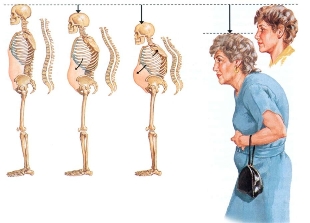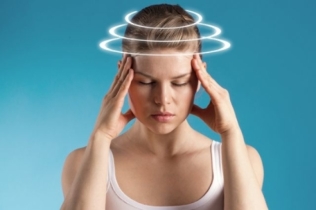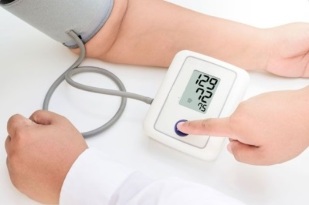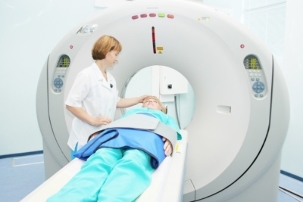Collar of the osteochondrosis is a disease of the spine, which produce degenerative changes in the intervertebral discs. In the first stage of development of the symptoms almost imperceptible, but as the injury process, the patient's condition deteriorates.

The cause of the disease
The osteochondrosis occurs as a result of the uneven loading of the spine. Triggers:
- heavy physical activities;
- the incorrect use of shoes;
- the malnutrition;
- the problem with the types of processes;
- nervous and emotional exhaustion.
The disease can occur during the gestation of the child. A great risk in the case of multiple pregnancies. The process may be genetically conditioned.
Stage of development and the one in the photo
The development of the degenerative disc disease is slower. There are 4 main stages of disease:
- A first phase. The patient feels discomfort by maintaining the movement and of residence in the same posture. Begin to form the seals in the vertebrate disks.
- The second phase. You experience the sensations of pain. The doctor of the quiroprctica and pain relievers.
- The third phase. It is observed, expressed by degenerative changes in the intervertebral discs.
- The fourth phase. The final stage of the development of the disease, which may be surprising to almost all the departments of the vertebral column.

In the last phase of conservative therapy will be ineffective. The doctor performing the surgery, which requires a lot of recovery.
The total of the symptomatology
The osteochondrosis can cover one or several departments of a backbone. Often the involvement of the vertebrae in the cervical region. The clinical symptoms of this deviation is directly related to the work of the brain. Take into account all the main symptoms of this disease.
The pain in the nape of the neck, the neck and the area of the neck
Patients often experience pain in the neck, occipital and neck area. This occurs because of the lack of blood irrigation in the departments of brain. Deformation of the vertebrae leading to compression of the vertebral artery. In the background of such degenerative processes, can result in an inguinal hernia.
Along with the pain of the feelings that produces the risk of serious complications. For example, failures in the blood pressure or the persistent loss of hearing and vision. Patients will sometimes produce attacks of panic and anxiety. Can last from 30 minutes. This condition is called diencephalic syndrome.
Another cause of pain – spasm of the muscles, which leads to a decreased blood flow. The patient may temporarily lose the ability to move the neck. A strong tension overload causes the feeling of pain in the neck start to flow at the back of the head and may extend beyond the head. As a result of these processes, the patient suffers from severe migraines.
The noise, the sound, the sensation zalozhennosti in ears

This set of symptoms is called a cochlear or cochlear. Doctors cannot always associate these deviations with the development of the degenerative disc disease cervical.
The noise and the ringing in the ears occurs when you change the position or long is in the same position.
Vertigo
A cervical vertebra is very thin, therefore, if you hold down the head are the subject of a strong charge. Are more susceptible to deformation of the vertebrae of breastfeeding and of the division. As a result of the deviations occur dizziness, which can be:
- System. Is this the feeling of circular movement of the body and the objects that surround it. Occurs due to an error in the work of balance, the muscles, and from receptors in the joints.
- Not of the system. The patient is present the feeling of nausea, the lightheadedness, and the uncertain state in an upright position. The sense of circular rotation of the lack.
If this symptom occurs, you should consult immediately to the doctor. The reasons for the emergency hospitalization of the patient:
- the numbness of the part of the shoulder;
- the paralysis of the facial muscles;
- the loss of consciousness;
- headache strong.
Displaced vertebrae and muscle spasm that leads to the jamming of the nerves that feed the brain. Due to the lack of oxygen to produce vertigo. Initially, the deficit of oxygen occurs in the occipital part of the head, as that is the center of balance.
The lack of air
The lack of air to the osteochondrosis can be of several types: problems with breathing and lack of oxygen. Breathing hard in the background of the crushing of the nerves that transmit signals from the pharynx into the esophagus.
The lack of air occurs due to pinching of the nerve. As a result, it produces a spasm of the diaphragm, which represents the change of the depth and rate of breathing. The patient is converted into heat, and difficulty breathing.

It is a serious symptom, as well as the lack of encouragement to the osteochondrosis is dangerous to the development of a number of other complications. In this case, the doctor prescribes the drug treatment.
Nausea
Cervical region is the most sensitive, as well as in its structure a large number of nerve fibers and vessels. Through the neck passes the artery that carries oxygen and nutrients to the brain. The osteochondrosis cervical are main and intervertebral hernia.
To the rear of the structures of the brain receives an insufficient quantity of arterial blood. This starts the mechanism of the compensatory reaction. The narrowing of the arteries causes a rise in blood pressure. The patient has the sensation of nausea.
If you do not restore the blood flow to the rear of the structures of the brain, the patient produces vomiting and loss of consciousness. Much disorder of the cerebral circulation entails the development of a stroke and a major disability.
Vision problems
The osteochondrosis of the neck, the patient may experience double vision, the spotlight and the flashing. They are a testimony about the beginning of the serious diseases, which appear in the background of osteochondrosis. These include the following diseases:
- glaucoma;
- cataract;
- the disease of claude bernard-Horner.
It is very important to be attentive to the changes of state of the eyes. It is an important symptom, which is a sign of health problems.
Horse racing blood pressure
Initially it may seem that the horse racing of the blood pressure and osteochondrosis have nothing to do. However, it is not so. With degenerative changes in the spine suffers the autonomic nervous system of the person.
The careers of horses are seen during the day. For this disease does not present a long hypertension.

Jump daily the dynamics of the uretralnoe of the hypertension occurs when the reflex irritation of the nerve endings, and brief spasms krovenosnyh vessels.
The symptoms of increased blood pressure in the osteochondrosis cervical:
- strong headache;
- the pressure peaks after stress or muscular over-exertion;
- the pain in the limbs: hands, feet, etc;
- low sensitivity in the neck area.
A sudden fainting or syncope
A sudden fainting may occur as a result of short-term termination of the power of the blood of the vertebrate arteries. If the patient is unconscious, make sure you have the feet above the head. This activates the flow of blood to the brain. After the fainting, problems can arise with speech and movement.
The pharynx problems
Sometimes, there is a degenerative process in the cervical vertebrae, can indicate only the pharynx the symptoms. They are manifested through:
- difficulty swallowing;
- a tickle in the throat;
- the sensation of a foreign body in the pharynx;
- the itching.
These signs are injury-related neuro-vascular trunks, which extend from the spinal cord. However, these symptoms are observed not only to the osteochondrosis, but also to inflammation and tumors.
The elevation of the body temperature
The osteochondrosis of cervical increases the temperature of the body. This symptom occurs in the following injuries:
- the syndrome of the vertebral artery;
- propellant unit;
- the stenosis of the spinnomozgovogo of the channel.
The increase of the temperature of the body can be caused by neurosis, neurological zabolevaniem and fibromyalgics syndrome. There are sometimes several pathological conditions, which stiffen the symptoms of osteochondrosis.
The manifestations depend on the stage of the disease

- In the first stage of the development of the disease, the symptoms may not experience. The first signs of the beginning of a degenerative process: a headache, a slight restriction of the motor activity of the neck, headache, discomfort in the neck and arms. These symptoms become evident in the curves or on the slopes of the head.
- In the second stage of development begins by the protrusion of the vertebrates, discs, brain of the cleft begin to decrease. The pain becomes more pronounced, it appears tinnitus and sleep disorders.
- The third stage is different to the destruction of the fibrous ring in the disk. Occur dislocations and displacements of the vertebrae, a herniated in the cervical region.
- In the fourth stage, the majority of the degenerative changes irreversible.
What occur in the brain?
The symptoms in the brain can be evident or minimal. Cerebral palsy deviations occur only when there is the clamping of the vertebral artery bone outgrowths. As a result, problems occur with the access of blood in the brain, and this causes spasms of the small vessels and interruptions in the hypothalamus.
The osteochondrosis of cervical, you may encounter the following syndromes:
- Hypothalamus. It can be neurological and physical.
- Syncope and drop-syndrome. Appear in the fact that the patient feels weak and loses consciousness for a few minutes.
- The side vestibular-stem cell. Experience dizziness in the curves of the head.
As a result of such degenerative processes, the patient tries to avoid public places. To do this arise from the unfounded fears and depression.
The differences between men and women
The symptoms cervical chondrosis men and women practically do not differ. Degenerative changes in the cervical vertebrae are to be found here more commonly in women, this is explained by the structure anatmica in the cervical region. The men of the cervical musculature developed better.

Chondrosis of the vertebral column in children and adolescents
Chondrosis of the vertebral column in children and adolescents occurs due to the total latency of the development of the connective tissue. This may be the result of the genetic abnormality or of violation of mineral exchange. Underdeveloped the spinal discs are vulnerable to different pathological processes.
The disease occurs due to the sedentary life, a long seat behind the computer and the presence of excess weight. The symptoms of this disease are similar to manifestations of osteochondrosis in adults. The defeat of the cervical region in the patient experiences pain in the neck, dizziness and migraines.
The diagnosis
Before the diagnosis, and the appointment of a treatment, the doctor conducts a series of surveys of diagnosis. Performs an external inspection, is evaluated the position and considers the state of the muscles.
Computed tomography
The ct scan is a chance to see bone tissue in 3D projection. According to the principle of the celebration, this procedure is similar to an x-ray. However, this diagnostic allows you to view posloynoe the image.
This procedure is not done to children and pregnant women, as there is a large dose of irradiation with x-rays. Among the contraindications can be attributed to the lack of patient has the ability to remain motionless for several minutes.
X-ray of
X – rays- the classic procedure that is assigned to the diagnosis of degenerative disc disease. She is virtually harmless and allows to estimate the degree of degenerative changes. With the help of this method, we can detect the disease in its early stages.

The x-ray does not give the opportunity to obtain a service of images of the tissues. There are a number of the most modern and informative of the methods of the survey. The x-ray is only suitable for the primary diagnosis.
The osteochondrosis is a disease that without timely treatment can lead to irreversible degenerative changes and disability. In the initial phase, there may only be a slight discomfort. As the pathological development of the process of the symptoms becomes more intense. When the first signs of vertebral column injuries should consult a physician immediately.































